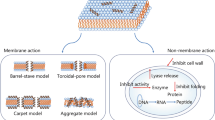Abstract
The oral LD50 values of an antipsoriatic drug, dithranol, were 1542 mg/kg in NMRI mice and 3216 mg/ kg in Wistar rats. Three 10-acyl analogues of dithranol (10-acetyl, 10-propionyl and 10-butyryl dithranol or butantrone) were more toxic both in mice and rats. They were mutagenic only in TA1537 of the five Salmonella typhimurium strains tested. None of them were mutagenic in two Escherichia coli strains. Butantrone was least toxic to test bacteria and had the lowest mutagenic activity on TA1537. In metaphase analysis of in vitro treated human lymphocytes, dithranol, 10-acetyl dithranol and 10-propionyl dithranol produced significant increases in the number of chromosome and chromatid gaps but without a clear dose-response relationship, and without inducing significant breaks. Butantrone did not cause significant increases in gaps or breaks. In the mouse micronucleus test, dithranol and butantrone caused no increases in micronucleated polychromatic or normochromatic erythrocytes, indicating lack of clastogenic activity in vivo at maximum tolerated doses. Hence, dithranol and its 10-acyl analogues have a weak mutagenic activity in vitro. The mutagenic activity of butantrone is lower than that of the other analogues and dithranol.
Similar content being viewed by others
References
Ames BN, McCann J, Yamasaki E (1975) Methods for detecting carcinogens and mutagens with the Salmonella/mammalian-microsome mutagenicity test. Mutat Res 31: 347–364
Bock FG, Burns R (1963) Tumor-promoting properties of anthralin (1,8,9-anthratriol). J Natl Cancer Inst 30: 393–397
Brandt H, Mustakallio KK (1983) Irritation and staining by dithranol (anthralin) and related compounds. III. Cumulative irritancy and staining during repeated chamber testing. Acta Derm Venereol (Stockh) 63: 237–240
Brown JP, Brown RJ (1976) Mutagenesis by 9,19-anthraquinone derivatives and related compounds in Salmonella typhimurium. Mutat Res 40: 203–224
Gaudin D, Cregg RS, Yielding KL (1972) Inhibition of DNA repair by cocarcinogens. Biochem Biophys Res Commun 72: 945–949
Gillberg BO, Zetterberg G, Swanbeck G (1967) Petite mutants induced in yeasts by dithranol, an important therapeutic agent against psoriasis. Nature (London) 214: 415
Gollapudi B, Kamra OP (1979) Application of a simple Giemsa-staining method in the micronucleus test. Mutat Res 64: 45–46
Martinmaa J, Vanhala L, Mustakallio KK (1978) Free radical intermediates produced by autooxidation of 1,8-dihydroxy-9-anthrone (dithranol) in pyridine. Experientia 34: 872
Männistö PT, Havas A, Haasio K, Hanhijärvi H, Mustakallio KK (1984a) Skin irritation by dithranol (anthralin) and its 10-acyl analogues in three animal models Contact Dermatitis 10: 140–145
Männistö PT, Vaissi L, Mustakallio KK, Viluksela M, Kosma VM, Collan Y (1984b) Tumor-producing activity of dithranol (anthralin) and two of its 10-acyl analogues in the dorsal skin of female NMRI mice. J Pharmacol Exp Ther 229: 255–260
McCann J, Choi E, Yamasaki E, Ames BN (1975) Detection of carcinogens as mutagens in the Salmonella/microsome test: Assay of 300 chemicals. Proc Natl Acad Sci 72: 5135–5139
Mustakallio KK (1979) Irritation and staining by dithranol (anthralin) and related compounds. I. Estimation with chamber testing and contact thermography. Acta Derm Venereol (Stockh) 59: 125–132
Mustakallio KK (1980) Irritation and staining by dithranol (anthralin) and related compounds: II. Structure-activity relationships among 10-meso-substituted acyl analogues. Acta Derm Venereol (Stockh) 60: 169–172
Mustakallio KK (1981) Irritation, staining and antipsoriatic activity of 10-acyl analogues of anthralin. Br J Dermatol 105: 20–23
Mustakallio KK, Brandt H (1984) Antipsoriatic activity of 10-acyl analogues of dithranol (anthralin). I. Phase I clinical trial of 10-propionyl dithranol and 10-butyryl dithranol (butantrone). Acta Derm Venereol (Stockh) 64: 63–66
Mustakallio KK, Pippuri AK, Honkanen E (1981) Dihydroxy-acylanthrons having anti-psoriatic activity. U. S. Patent 4.299.846
Mustakallio KK, Brandt H, Halmekoski J, Vilvala R, Martinmaa J, Honkanen E, Pippuri A, Haarala J, Männistö P (1982) Structure-activity relationships among dithranol and its new derivatives. Poster in 16th Intern Congr Dermatol, Tokyo
National Board of Health (1961) Nordic Pharmacopoea, Finnish Edition, vol. IV, Helsinki, pp 31–35
Poirier MC, DeCicco BT, Liberman MW (1975) Nonspecific inhibition of DNA repair synthesis by tumor promoters in human diploid fibroblasts damaged with N-acetoxy-2-acetylaminofluorene. Cancer Res 35: 1392–1395
Rogers S, Marks J, Shuster S, Vella Briffa D, Warin A, Greaves M (1979) Comparison of photochemotherapy and dithranol in the treatment of chronic plaque psoriasis. Lancet i: 455–458
Scott D, Danford N, Dear B, Kirkland D, and Richardson C (1983) In vitro chromosome aberration assays. In: Dean BJ et al. (eds) UKEMS Sub-Committee on Guidelines for Mutagenicity Testing. Repert. Part I. Basic Test Battery. Published by United Kingdom Environmental Mutagen Society, Swansea
Segal A, Katz C, VanDuuren BL (1971) Structure and tumor-promoting activity of anthralin (1,8-dihydroxy-9-anthrone) and related compounds. J Med Chem 14: 1152–1154
Siebert D, Zimmermann FK, Lemperle E (1970) Genetic effects of fungicides. Mutat Res 10: 533–543
Swanbeck G, Hillström L (1971) Analysis of etiological factors of squamous cell skin cancers of different locations. Acta Derm Venereol 51: 151–156
Tikkanen L, Matsushima T, Natori S (1983) Mutagenicity of anthraquinones in the Salmonella preincubation test. Mutat Res 116: 297–304
Van Duuren BL, Segal A, Tseng S-S, Rusch GM, Loewengart G, Maté U, Roth D, Smith A, Melchionne S, Seidman I (1978) Structure and tumor-promoting activity of analogues of anthralin (1,8-dihydroxy-9-anthrone). J Med Chem 21: 26–31
Yasuhira K (1968) Skin papillomas production by anthralin painting after urethane initiation in mice. Gann 187–193
Author information
Authors and Affiliations
Rights and permissions
About this article
Cite this article
Männistö, P.T., Kirkland, D., Viluksela, M. et al. Toxicological studies with dithranol and its 10-acyl analogues. Arch Toxicol 59, 180–185 (1986). https://doi.org/10.1007/BF00316330
Received:
Accepted:
Issue Date:
DOI: https://doi.org/10.1007/BF00316330




